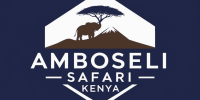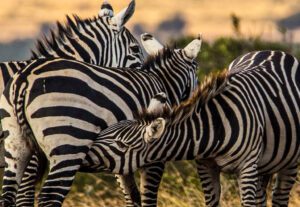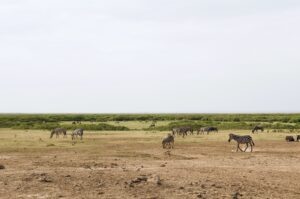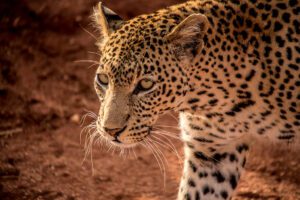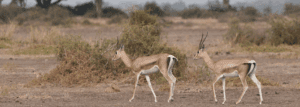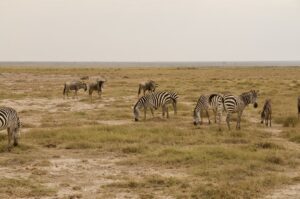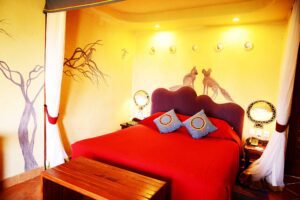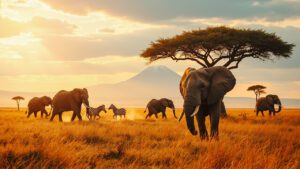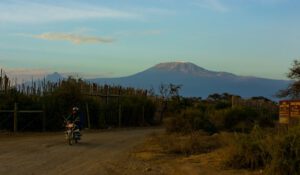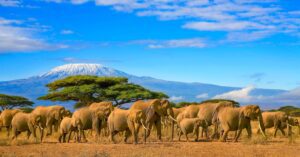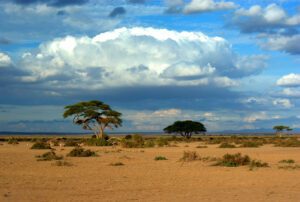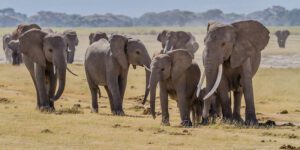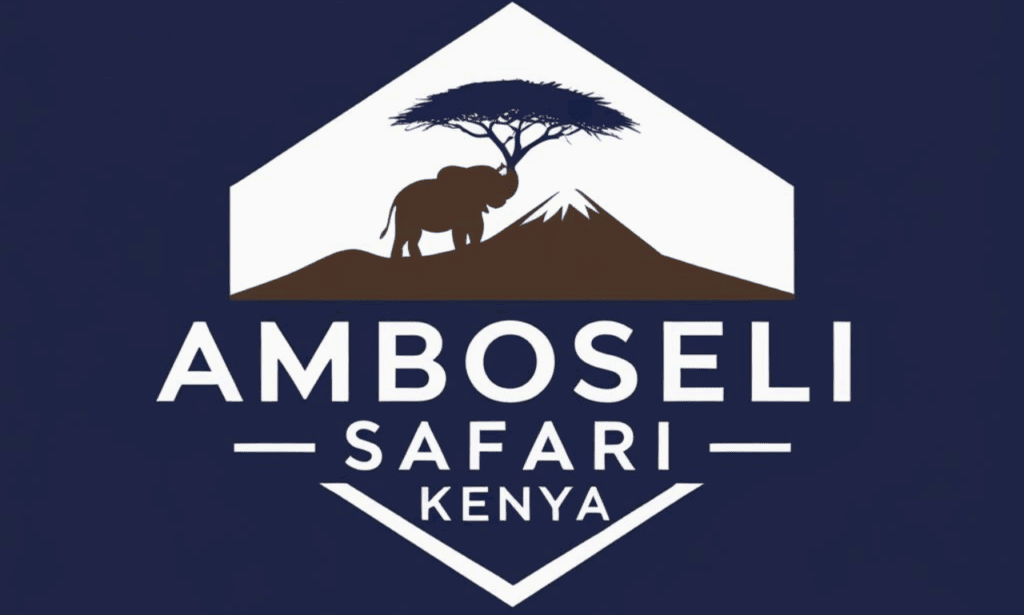What is Amboseli Bush Camp and where is it located?
Amboseli Bush Camp is a private and exclusive safari camp located in southern Kenya. Specifically, it is situated near Amboseli National Park, one of Kenya’s most famous wildlife reserves, which is known for its stunning views of Mount Kilimanjaro (the tallest mountain in Africa).
The camp is ideally positioned in the heart of nature, offering visitors the chance to see wild animals, peaceful landscapes of the Kenyan savannah, and the spectacular backdrop of Kilimanjaro. Amboseli National Park itself is renowned for the large herds of elephants that roam its plains, as well as for its distinctively dry and open environment, punctuated by lush swamps and wetlands.
Overall, Amboseli Bush Camp provides a quiet and intimate setting for visitors who want to get close to nature while enjoying the beauty and wilderness of East Africa. Unlike large resorts, its focus is on maintaining a sense of connection with the land and wildlife around it.
What kind of accommodations or facilities does Amboseli Bush Camp offer?
Amboseli Bush Camp offers comfortable and authentic safari-style accommodations that aim to blend into the natural environment. Visitors often stay in spacious, luxury tents that include large beds, furnishings, and modern comforts, ensuring both an adventurous and relaxed experience. Even though you are camping, these types of accommodations come with essential amenities like bathrooms, showers, and sometimes even private porches where you can sit and watch the diverse wildlife.
The camp typically includes facilities like a dining area, where meals are freshly prepared using local ingredients, and a comfortable lounge area where guests can relax and chat after a day of exploration. Guests can also expect attentive camp attendants who take care of every detail to make their stay pleasant, catering to every need for a perfect stay.
One of the camp’s highlights might also include eco-friendly features, such as solar-powered electricity or systems to minimize the environmental impact. While it may vary depending on the camp’s overall offerings, the focus is on maintaining a balance between luxury and sustainability, ensuring visitors have an amazing stay that connects them with the stunning location and its incredible biodiversity.
What makes Amboseli Bush Camp unique compared to other safari camps in Kenya?
What makes Amboseli Bush Camp truly unique is its intimate setup combined with its prime location near Amboseli National Park and Mount Kilimanjaro. Unlike large, bustling safari lodges with lots of tourists, Amboseli Bush Camp is often smaller and more private, which means visitors can enjoy a quiet, personal experience.
The fact that you get views of Mount Kilimanjaro right from the camp adds an iconic, postcard-like touch to your safari. There’s something magical about seeing wild elephants stroll across the horizon with Africa’s tallest mountain in the background – it’s an image that tends to stay with visitors forever.
Additionally, Amboseli is famous for its massive herds of elephants, some of the most studied in the world. Guests at Amboseli Bush Camp have a great chance to observe these majestic animals up close in their natural habitat. The region’s scenery is also distinct, with its combination of open landscapes, swamps, and dry dusty plains, making it different from other parks like the Maasai Mara or Tsavo.
Many private camps like this also focus on providing personalized service for guests. Since the camp is often smaller, the staff and guides may tailor safaris or activities to your specific interests. This feeling of being truly immersed in nature, away from the crowds, makes Amboseli Bush Camp a special destination for anyone looking for a deeper and more personal safari experience.
What activities or experiences are available for visitors at Amboseli Bush Camp?
At Amboseli Bush Camp, visitors can enjoy a range of exciting activities that help them explore and connect with the stunning landscapes, vibrant wildlife, and unique culture of the region. One of the main attractions is expert-guided game drives. These drives take visitors deep into the Amboseli ecosystem to spot iconic African wildlife, such as elephants, lions, cheetahs, zebras, and giraffes. Guides often share fascinating insights about animal behavior, making the experience educational as well as thrilling. For travelers who are keen photographers, specialized photographic safaris are available. These safaris position individuals at the perfect spots and lighting conditions to capture breathtaking shots of wildlife and landscapes.
Walking safaris are another favorite experience. Unlike game drives, walking safaris let visitors experience the African bush up close, guided by knowledgeable trackers who can point out smaller details like animal tracks, unique plants, and hidden creatures that might go unnoticed from a vehicle. This offers a more intimate way to connect with the environment and appreciate the incredible biodiversity of the area.
For those interested in cultural experiences, the camp often organizes visits to local Maasai villages. Here, visitors can learn about Maasai traditions, see traditional dances, and even participate in the daily lives of community members. This exchange fosters not just memorable interactions but also a deeper appreciation for the Maasai way of life.
Sundowner experiences are a must-try, where visitors enjoy drinks and snacks outdoors at sunset while soaking in the serene beauty of the African plains. Star-gazing at night is another magical activity, as the unpolluted skies over Amboseli reveal a dazzling canopy of stars.
Lastly, kids and young travelers can engage in educational activities that combine fun with learning about nature and conservation. Overall, Amboseli Bush Camp offers something for everyone, whether you are seeking adventure, relaxation, or cultural enrichment.
What wildlife or nature experiences can one expect in the Amboseli area?
Amboseli is world-renowned for its incredible wildlife and iconic views of Mount Kilimanjaro, making it a dream destination for nature lovers. The most famous wildlife experience in the area is undoubtedly the chance to see large herds of elephants. Amboseli is known as one of the best places in Africa for kenya wildlife tours, allowing visitors to get close to elephants in their natural habitat. Watching these majestic creatures roam freely across the plains, with Mount Kilimanjaro as the backdrop, is an unforgettable sight.
Visitors can also expect to see other animals like lions, cheetahs, leopards, buffaloes, zebras, wildebeests, hyenas, and an array of antelopes. Birdwatchers will be delighted as well, over 400 bird species inhabit the area, including flamingos, pelicans, and kingfishers. Amboseli’s seasonal swamps and shallow waters make it a magnet for waterbirds, enhancing the incredible biodiversity of the park.
The landscape in Amboseli is just as captivating as the wildlife. The park is famous for its wide, open plains dotted with acacia trees and swampy areas that sustain its animal population even during dry seasons. Mount Kilimanjaro, Africa’s highest peak, provides a stunning background to all of this. Early mornings on the plains are especially breathtaking, as the mountain’s snow-capped peak often becomes more visible before the clouds set in.
For a more personal experience, visitors can try nature walks where they connect with nature up close. You might notice animal tracks, learn about unique flora, or hear the sounds of distant animals that you wouldn’t during a vehicle safari. Overall, Amboseli is a treasure trove of nature experiences that cater to both adventurous and reflective travelers alike.
Is Amboseli Bush Camp suitable for families, couples, or solo travelers?
Amboseli Bush Camp is a versatile destination designed to welcome all types of travelers, whether you’re a family, a romantic couple, or a solo adventurer. The camp offers tailored experiences to suit the varying needs of its guests, making it an ideal spot for your next visit.
For families, Amboseli Bush Camp is a great choice because it often features kid-friendly activities that introduce children to wildlife and conservation efforts in an engaging and educational manner. Some camps even have guides experienced in entertaining and teaching children about nature through fun games and stories. Parents can relax knowing their kids are in good hands while still bonding as a family during guided excursions like game drives or nature walks. Family accommodations ensure enough space for comfortable stays, and shared experiences, like watching huge herds of elephants or enjoying a campfire together, create memories to last a lifetime.
For couples, the camp creates a peaceful and romantic setting. Imagine sipping wine with your partner as you watch the sun set over the Amboseli plains or sharing the thrill of spotting a predator during a morning game drive. The stunning vistas of Mount Kilimanjaro add to the romantic atmosphere, providing the perfect backdrop for honeymooners or those celebrating special moments. Many camps also offer private dining and suite tents to enhance the experience for couples.
Solo travelers, on the other hand, will appreciate the welcoming and communal environment of the camp. Many lodges organize group safaris where solo visitors can join others, making it easy to connect with fellow travelers while still having the option to enjoy quiet, reflective moments in nature. Additionally, the presence of camp attendants ensures that solo travelers always feel safe and looked after while exploring the wild.
In short, whether you’re exploring on your own, with a loved one, or with your entire family, Amboseli Bush Camp is well-equipped to provide you with a memorable, personalized safari experience, making it a great place for an amazing stay.
What is the best time of year to visit Amboseli Bush Camp?
The best time to visit Amboseli Bush Camp largely depends on what kind of experience you’re looking for, but generally, the dry seasons are ideal for those seeking an amazing stay. Amboseli National Park, where the camp is located, has two main dry seasons: January to March and June to October. These months are perfect for wildlife viewing because animals tend to gather around water sources, making them easier to spot. For example, you can expect to see huge herds of elephants, zebras, giraffes, and lions near Amboseli’s famous swamps and watering holes during these periods.
The wet seasons, which occur from November to December and April to May, have their own charm. The rains bring lush greenery and vibrant landscapes, so photographers often love this time of year. Plus, the wet season is a fantastic time for birdwatching, as many migratory bird species arrive in the region. However, keep in mind that the rains can make some roads muddy and less accessible, which could impact your safari experience.
One highlight of visiting Amboseli any time of year is the view of Mount Kilimanjaro. While it’s visible year-round, the clearest sightings are often early in the morning after cool, dry nights. So, no matter when you visit, waking up early to catch the dramatic sunrise over Kilimanjaro is a must for any wildlife enthusiast.
If your priority is to enjoy peak wildlife activity with fewer weather concerns, the dry season is your best option. But if you’re intrigued by lush surroundings and quieter travel experiences, the wetter months could be a great fit. In both cases, you’ll still have an incredible experience enjoying Amboseli’s iconic landscapes and rich animal life, making it a perfect stay for nature lovers.
What cultural interactions or experiences are available with the local communities near the camp?
Visiting Amboseli Bush Camp offers unique opportunities to engage with the local Maasai communities who inhabit the area. The Maasai, a semi-nomadic ethnic group, are known for their distinctive customs, colorful traditional attire, and deep connection to the land and wildlife. One of the most popular experiences is visiting a Maasai village, where you can learn firsthand about their culture, history, and way of life during your next visit to Amboseli Park.
When you visit a Maasai village, you might be greeted with traditional songs and dances, including the famous “jumping dance” (adumu), where young warriors leap into the air to demonstrate strength and stamina. The Maasai are incredibly welcoming and enjoy sharing stories about their traditions, such as how they live in mud-and-stick huts called “manyattas,” their dietary habits (which include milk and blood from livestock), and how they coexist with the diverse wildlife in the Amboseli region.
Visitors can also participate in activities like learning how the Maasai make fire without matches, watching beadwork being created by Maasai women, or trying on traditional shukas (red cloths) that the Maasai wear. The colorful beaded jewelry, which often carries symbolic meanings, is also available for purchase, providing not only a unique souvenir but also direct support to the community.
These cultural interactions promote mutual understanding and give visitors a deeper appreciation of the Maasai’s resilience and resourcefulness. Importantly, many community visits are organized respectfully and in partnership with the Maasai people to avoid exploitation. Before participating in such experiences, it’s always a good idea to confirm that the camp or tour operator works ethically and shares proceeds with the village, ensuring a perfect stay for everyone involved.
Overall, these cultural exchanges help visitors connect with the rich human heritage of the Amboseli area while ensuring that the local communities benefit from tourism, making it an amazing stay for all who visit.
How accessible is Amboseli Bush Camp, and what transport options are available?
Amboseli Bush Camp is relatively accessible, but getting there requires some planning. Many visitors arrive from Nairobi, Kenya’s capital, as it is the primary gateway to the region. The camp is about 240 kilometers (150 miles) from Nairobi, and there are two main ways to travel: by road or air.
If you choose to go by road, the journey takes approximately four to five hours, depending on traffic and road conditions. Most safari travelers use private 4×4 vehicles or arrange for transfer services through their tour operator or the camp itself. The road trip is scenic, giving you a chance to enjoy views of the countryside and possibly spot wildlife before you even reach the camp. However, it’s good to note that parts of the drive may be bumpy, especially as you approach Amboseli, so a sturdy vehicle is essential.
For those who prefer to save time, flying is an excellent option. Small charter flights operate between Wilson Airport in Nairobi and Amboseli’s airstrip, a quick 45-minute trip. Once you land at the airstrip, the camp staff typically arrange a transfer, which also doubles as a mini-game drive as you make your way to the property.
It’s worth mentioning that while Amboseli Bush Camp is found near Amboseli National Park, it sits in a private conservancy outside the park boundaries. This location adds to its exclusivity and gives visitors a more peaceful, less touristy experience. However, it also means that self-driving directly to the camp requires precise directions or assistance from the camp staff, especially if you’re not familiar with the area.
Whether you come by road or air, Amboseli Bush Camp is designed to make your arrival seamless and stress-free. Communicating with the camp ahead of your trip makes travel arrangements much easier, ensuring you can focus on enjoying the adventure ahead.
What measures does Amboseli Bush Camp take to support eco-tourism and sustainability?
Amboseli Bush Camp is deeply committed to eco-tourism and sustainability, and this is reflected in various practices aimed at protecting the environment and supporting the local community. First, the camp uses environmentally friendly construction materials and techniques. For example, many safari accommodations, including Amboseli Bush Camp, are built with as little impact on the environment as possible, often using wood, natural stone, or other locally sourced materials instead of heavy concrete.
The camp also emphasizes renewable energy. Solar power is commonly used for lighting, heating water, and other energy needs, reducing reliance on fossil fuels and lowering its carbon footprint. Energy-efficient systems like low-energy bulbs and devices further help conserve energy during operations, making it a great place for eco-conscious travelers.
Water conservation is another critical aspect. In arid environments like Amboseli, water is a precious resource. Camps often recycle “greywater” (used water from basins or showers) for purposes like irrigating vegetation around the property. Amboseli Bush Camp also encourages guests to limit water usage through systems like low-flow faucets and showers, as well as providing reminders about the importance of conserving water during their amazing stay.
Another core sustainability pillar is waste management. Amboseli Bush Camp likely minimizes single-use plastics by using refillable water bottles and providing biodegradable alternatives where needed. Waste is sorted and responsibly dealt with, recycling wherever possible, to ensure minimal impact on the environment, allowing for a more sustainable African adventure.
Finally, the camp aligns itself with local communities, often sourcing food, crafts, and other supplies from nearby villages. This not only reduces the environmental impact of transporting goods from far away but also supports the livelihoods of local people.
As far as eco-tourism goes, the camp also promotes respectful wildlife practices, such as adhering to the “leave no trace” principles and ensuring tourists don’t disturb the animals. Safaris are often limited in terms of the number of vehicles, and drivers are trained to avoid damaging the environment while interacting responsibly with wildlife, including the majestic elephants and other fauna in the area.
In short, sustainability at Amboseli Bush Camp isn’t just a catchphrase; it’s a way of life. By living in harmony with nature, conserving resources, and uplifting local communities, they aim to preserve Amboseli’s beauty for future generations, making it a perfect stay for wildlife enthusiasts.
Are there any important tips or requirements for visitors to prepare for a stay at Amboseli Bush Camp?
Visiting Amboseli Bush Camp (or any safari camp) requires a little preparation to ensure you have a smooth, comfortable, and enjoyable experience. Here are some key tips and requirements:
- Pack Smart: Be sure to pack lightweight, neutral-colored clothes (like khaki, beige, or olive green) that blend in with the safari environment. Bright colors can scare away animals. Don’t forget a wide-brimmed hat, sunglasses, sunscreen, and sturdy walking shoes for protection against the sun and uneven ground. Evenings may be chilly, so bring warm layers or a jacket.
- Vaccinations and Health: Make sure you’re up to date on recommended vaccinations, particularly for tropical destinations. Additionally, Kenya is a malaria-prone region, so bringing malaria prophylaxis and using insect repellent is essential.
- Documents: Ensure you have a valid passport and any required visas to enter Kenya. Travel insurance is also a must, as it covers health emergencies and unforeseen events like trip cancellations.
- Currency and Payments: The Kenyan Shilling (KES) is the local currency, but many camps, including Amboseli Bush Camp, may accept U.S. dollars, credit cards, or mobile payments. Check in advance to avoid confusion.
- Camera Gear: Safaris are all about wildlife photography and memories, so pack a good camera (with spare batteries and memory cards) and binoculars to get up-close views of animals.
- Electricity and Connectivity: Some safari camps run on solar power and may have limited electricity, available only during certain hours. It’s wise to carry portable chargers for phones and cameras. Note that Wi-Fi might either be unavailable or inconsistent, so be prepared to disconnect from technology.
- Cultural Etiquette: Be respectful of the local Maasai communities, as you might meet or interact with them during your stay. Learn a few basic Swahili phrases like “Jambo” (hello) and “Asante” (thank you) to leave a positive impression.
- Pack Light: Safari planes or vehicles often have luggage restrictions. Your bags should generally be soft-sided (like duffel bags) instead of rigid suitcases, to fit easily into storage compartments.
- Safety and Comfort: Listen carefully to the camp staff’s safety guidelines, especially around wildlife. Animals roam freely around safari camps, so don’t wander off alone after dark.
In summary, Amboseli Bush Camp offers an incredible experience close to nature, but being well-prepared for the environment, both physically and culturally, will help you make the most of your trip.
What packages or rates are available for booking at Amboseli Bush Camp?
The specific packages and rates for Amboseli Bush Camp may vary depending on the season, demand, and customization options for your trip, but here’s a general idea of what’s typically offered at safari camps. Rates are usually charged on a per-person, per-night basis, with additional options for extended stays or special packages, making it a great place for those seeking an amazing stay.
Most safari camps, including Amboseli Bush Camp, often have all-inclusive packages that may include accommodations in spacious tents, all meals, game drives, and even drinks. These packages typically cover most aspects of your stay, making them convenient for travelers who want a hassle-free experience. For example, you might pay $400-$800 USD per person per night for a mid-range luxury safari, while exclusive, high-end experiences can exceed $1,000 USD per night.
Some camps also offer seasonal rates. The “high season” (typically June to October and December to February in Kenya) aligns with the dry months when wildlife viewing is at its best, particularly in Amboseli Park known for its incredible biodiversity. These months tend to be more expensive due to increased demand. Conversely, the “low season” (like the rainy months of March to May) may offer lower rates or discounts, but wildlife sightings could be less predictable.
Additionally, Amboseli Bush Camp may have customized packages for family groups, honeymooners, or photography enthusiasts. Family packages could include special discounts for children or family-tented accommodations. For honeymooners, romantic extras like private dinners or sunrise game drives might be included, enhancing your African adventure.
Finally, make sure to inquire about extras or exclusions, such as conservation fees, optional activities (like balloon safaris), and gratuities for staff. While these are often not included in standard rates, they are an essential part of the overall safari experience, so budgeting for them is crucial.
Feel free to contact Amboseli Bush Camp directly for up-to-date details on rates and packages, or reach out to a tour operator that works with them for more personalized trip planning.
